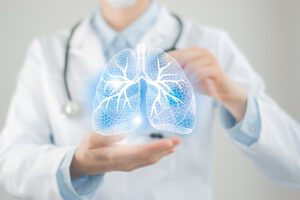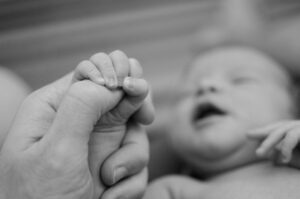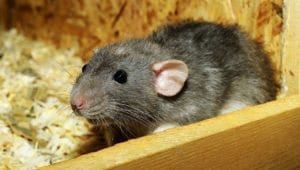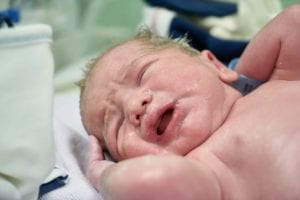Bronchopulmonary Dysplasia (BPD)
What is bronchopulmonary dysplasia (BPD)?
Bronchopulmonary dysplasia (BPD) is a lung condition affecting newborns. Most often, BPD can be found in infants born prematurely (at least 10 weeks before their due dates, weighing 2 pounds or less) and given oxygen therapy. It can, however, be diagnosed in infants who had a full-term birth, but were then put on a breathing machine.
Though many infants will improve over time, long-term treatment and/or ongoing breathing support may be necessary.
What causes bronchopulmonary dysplasia (BPD)?
BPD occurs when infants are given high amounts of oxygen for long periods of time after birth because of damaged or insufficiently formed lungs. In premature infants, this is commonly the result of severe respiratory distress syndrome (RDS).
Babies who have RDS aren’t able to take in enough oxygen due to an inability to produce adequate surfactant, a liquid which helps keep the lungs open. As such, the lungs of a RDS infant will collapse, making it harder for them to breathe and take in appropriate amounts of oxygen.
Infants with RDS will be supported with oxygen therapy or ventilators. RDS symptoms could very well improve over time, but should the child continue to need breathing support past their original due dates, they’ll be diagnosed with bronchopulmonary dysplasia.
Other risk factors and suspected causes of BPD include:
- Ongoing mechanical ventilation, which damages alveoli in the lungs
- High oxygen level intake, which may cause inflammation
- Congenital heart disease
- Lung infection
- Hereditary components
Is there a test that leads to a bronchopulmonary dysplasia (BPD) diagnosis?
Doctors can use a number of tests to determine whether or not an infant has developed BPD. The following may be employed to find out the state of the infant’s lungs and how much oxygen is being filtered through the body:
- Blood Tests: Blood is taken from an artery to measure the amount of oxygen and carbon dioxide, and the pH balance, in the body.
- Chest CT Scan/X-Ray: These are imaging methods to capture pictures of the chest cavity.
- Pulse Oximetry: Another test measuring oxygen levels. It involves placing a clip-like “probe” onto a body part, like a finger. The probe measures oxygen in the blood using light.
What are common bronchopulmonary dysplasia (BPD) symptoms?
Bronchopulmonary dysplasia symptoms can be the same as those caused by RDS, since RDS is a common base condition in those infants who later develop BPD:
Symptoms include:
- Bluish skin tone
- Quick breathing
- Grunting sounds
- Nostrils flaring
- Shortness of breath
- Coughing
- Pulling between and below the ribs when breathing
If babies, including those with RDS, continue needing oxygen therapy past their original due dates, it’s an early indication of BPD.
While many of these symptoms do revolve around breathing and the lungs, trouble feeding is another bronchopulmonary dysplasia symptom of which parents and doctors should be aware.
What are the options for bronchopulmonary dysplasia (BPD) treatment?
Thankfully, infants with BPD can recover, but it takes time. Treatment will begin immediately. Infants will spend time in the hospital receiving breathing assistance from a ventilator, with pressure and oxygen being gradually reduced as the baby’s damaged lungs gain strength. Over time, they’ll transition to oxygen via a mask or nasal tube for an extended period of time, and the need for oxygen therapy may continue even after the infant is brought home.
In addition, babies with BPD will commonly be fed with an NG tube (i.e. a tube inserted into the stomach) to increase calorie intake. Limiting fluids and a medication regimen to discourage fluid build-up in the lungs is also an important part of the treatment plan.
These measures may continue for months—sometimes even years. Some babies will need a tracheostomy or an endotracheal to allow for breathing tubes.
While the symptoms of BPD may get better, it’s inconclusive whether babies with BPD will ever have fully functioning lungs. To help with the treatment process, parents with infants who have or are suspected to have BPD should:
- Explore the use of corticosteroid medicine if concerned about birthing prematurely
- Ensure healthy nutrition
- Avoid lung irritants, like cigarette smoke
- Prevent infection by often washing hands and avoiding crowds
- Seek support from the hospital case manager or social worker
Where can I find more information about bronchopulmonary dysplasia (BPD)?
Bronchopulmonary Dysplasia (BPD) Articles

ICYMI: Dose Escalation Study Phase Completed on Zelpultide Alfa for BPD

Vitamin D Insufficiency Linked to Bronchopulmonary Dysplasia

Researchers Work to Understand the Role of GDF15 in Lung Diseases Like Idiopathic Pulmonary Fibrosis

Study from Japan Shows Mortality Associated with Bronchopulmonary Dysplasia has Decreased

Experimental Treatment for Bronchopulmonary Dysplasia Shows Long Term Positive Impact in Rat Model

Study Investigates the Most Predictive Indicators of Bronchopulmonary Dysplasia

A Potential Drug For Bronchopulmonary Dysplasia is Ready For Human Trials, Developers Say







